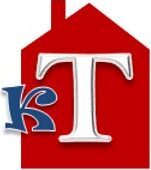As Grand Rapids continues to flourish, both economically and culturally, the rental housing market is undergoing significant transformations. Recent trends indicate shifting dynamics that will shape the future of rental homes in this vibrant city. This article explores the current landscape of rental homes in Grand Rapids, the factors driving change, and predictions for what lies ahead.
Current Landscape of Rental Homes
Grand Rapids has witnessed a surge in population growth over the past decade, driven by an influx of young professionals and families seeking quality living experiences. This has led to increased demand for rental properties, particularly in urban neighborhoods such as The Wealthy Street Corridor, East Hills, and the downtown area. The housing market’s strength is characterized by a competitive rental scene, with occupancy rates remaining high and rental prices on the rise.
Key Factors Influencing Change
1. Economic Trends
The economic prosperity of Grand Rapids, evidenced by a strong job market and an influx of businesses, directly impacts rental demand. The city’s commitment to fostering innovation, especially in sectors like healthcare and manufacturing, attracts a diverse population eager to rent homes in desirable neighborhoods.
2. Urbanization and Lifestyle Preferences
There is a noticeable trend toward urban living, with many individuals and families opting for properties close to amenities, public transport, and urban parks. The shift reflects changing lifestyle preferences, as younger generations prioritize convenience and accessibility over traditional homeownership.
3. Technological Advancements
Technology continues to revolutionize the rental market. Platforms like Zillow and Airbnb provide renters with access to a wider variety of listings and rental options. Innovations such as virtual tours and online leasing processes also enhance the tenant experience, making it easier for renters to find suitable homes.
4. Sustainability and Eco-Friendly Living
Sustainability is becoming increasingly important to prospective tenants. Eco-friendly homes with energy-efficient appliances, solar panels, and sustainable building materials are gaining traction. In response, developers in Grand Rapids are beginning to incorporate environmentally friendly practices into new rental properties.
Predictions for the Future
1. Increased Rental Options
As more developers recognize the growing demand for rental housing, we can expect an increase in new developments. Mixed-use buildings that combine residential, commercial, and community spaces will likely become more common, catering to the trend towards urban living.
2. Affordability Challenges
While Grand Rapids appears to be a booming rental market, increasing demand may lead to affordability issues. As rental prices continue to rise, there is a growing concern about the middle and lower-income households being priced out. Solutions such as inclusionary zoning and rent control measures may emerge as municipalities aim to maintain diversity in neighborhoods.
3. Shift to Remote Work and Flexible Housing
The COVID-19 pandemic has significantly changed the way people view work and life balance. With remote work becoming more commonplace, many renters may seek larger spaces or properties equipped with home offices. This preference could influence the types of properties being developed in the coming years.
4. Remote Living Communities
As the demand for rental properties grows in suburbs and surrounding areas, we may see the development of remote living communities. These neighborhoods will cater to individuals and families who prefer suburban life while still being connected to urban amenities.
5. Smart Home Features
Technology will play an increasingly crucial role in rental homes. Smart home features, such as automated systems for lighting, security, and climate control, will become standard in many rental properties. These amenities not only enhance convenience but also appeal to tech-savvy renters looking for modern living environments.
6. Community and Tenant Engagement
Future rental developments may focus on creating opportunities for community engagement. Common areas, shared facilities, and organized events can foster connections among residents, enhancing the overall living experience in rental homes.
Conclusion
The future of rental homes in Grand Rapids is poised for exciting developments as the city continues to grow and evolve. With a strong economic foundation, changing lifestyle preferences, and technological advancements shaping the market, renters can expect a diverse array of options that cater to their needs. However, challenges regarding affordability and equitable access to housing will require proactive measures from developers and policymakers. By addressing these concerns, Grand Rapids can ensure that its rental market remains vibrant and welcoming for all its residents.
What Type of Property are you Looking for?
